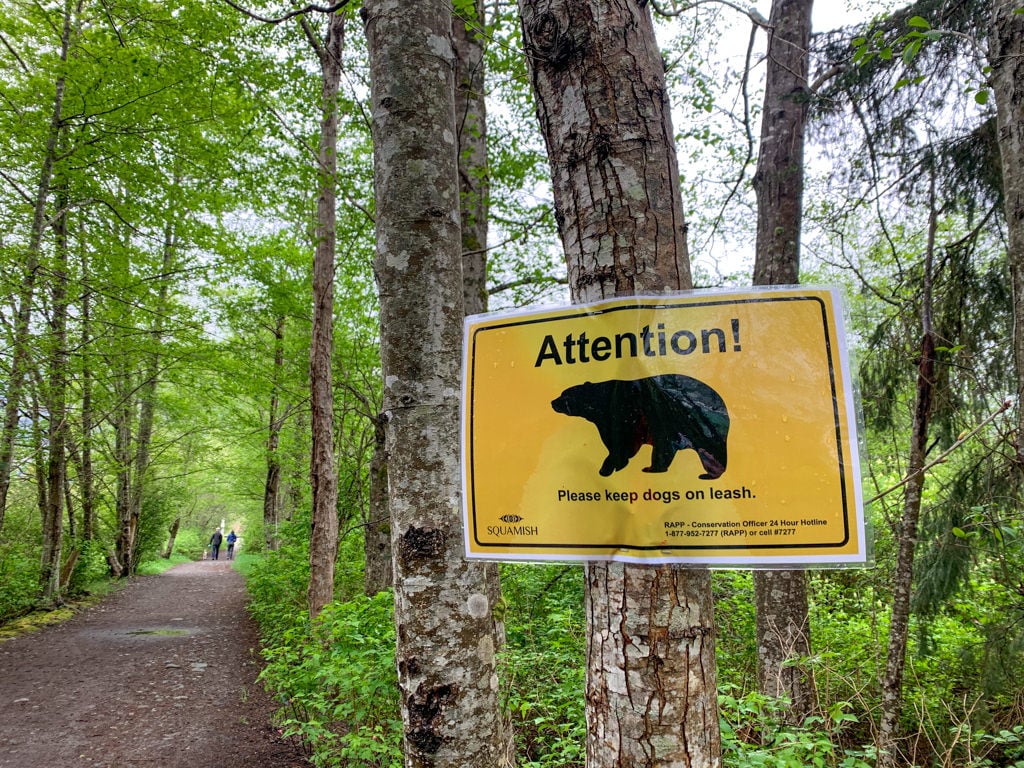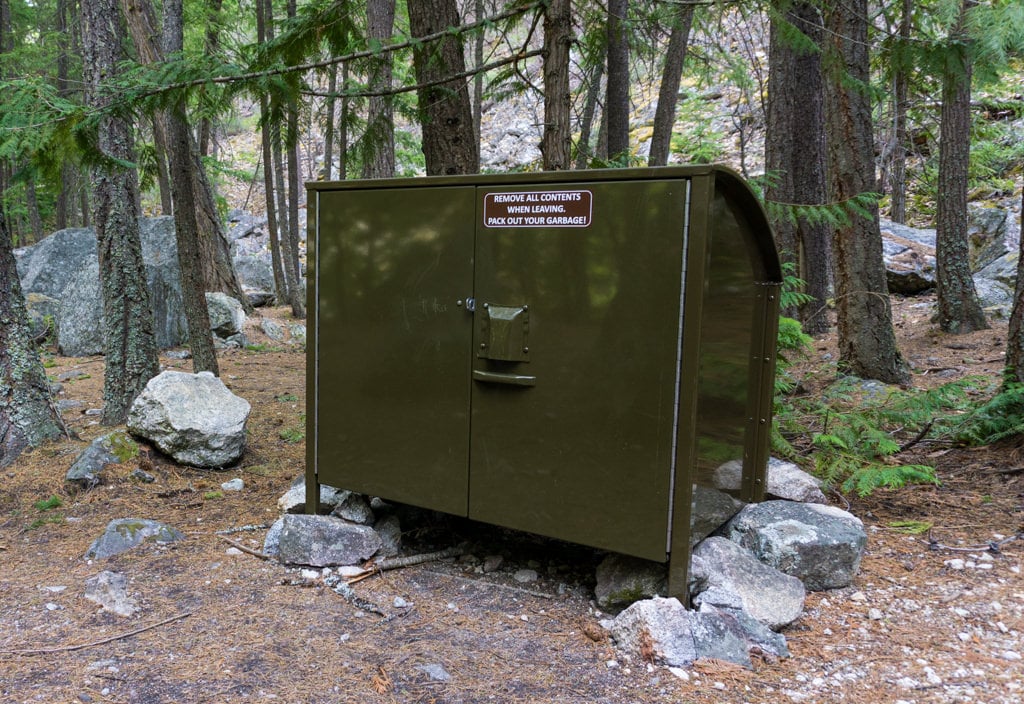11 Bear Safety Tips for Hikers
While you might not see them often, bears live near most Vancouver-area hiking trails. For the most part, bears are omnivores, more interested in berries, roots, and fish than people. But when bears are surprised or protecting their food or cubs, interactions can turn negative. Here are a few basic bear safety tips to keep in mind for your next hike.
Know Before You Go
Read recent trail reports, check park websites, and pay attention to trailhead signage to see if there are “bear in area” warnings for the trail you plan to hike.
Make Noise
Many negative encounters occur when people surprise a bear. Make noise as you hike, especially in areas of low visibility like near streams, in berry bushes, or when the wind is against you. Singing, talking loudly, and calling out are the most effective way to warn bears of your presence. The sounds of bear bells and music do not carry far and bears may not associate them with people.
Avoid Dawn and Dusk
Bears are most active at dawn and dusk. Hike during the middle of the day to avoid encountering a bear.
Pay Attention
Be alert and watch for signs of bears while you hike. Look for fresh bear poop, tracks, dead animals, and trampled vegetation. Be alert for strange smells that may indicate a rotting carcass. Leave the area if you find lots of recent bear sign.
Hike in a Group
Groups of at least four people are statistically less likely to encounter bears. Keep your group together as you hike.
Keep Your Dog Close
Using a leash is recommended in bear country. Dogs can provoke defensive behaviour in bears. Unleashed dogs may chase after a bear, but then turn around and bring the bear back to you.

Give Bears Space
If you see a bear, don’t approach it for a better view. Use binoculars or the zoom lens on your camera to get a closer look.
Carry Bear Spray
Bear spray contains capsaicin, an active component of chili peppers. It’s very effective at deterring bears when sprayed at their face. Since many bear encounters are a surprise, it is important to carry your bear spray in a place where you can grab it in an emergency. Lash it to the shoulder or waist strap of your pack to carry it securely but still ensure quick access. Don’t hide it away inside your backpack. (For more info about bear spray and how to use it, see Parks Canada’s bear spray info.)
Store Your Food Safely
Don’t leave food unattended during lunch breaks or at campsites. At camp, store your food and smelly items like toiletries and sunscreen in your car, a bear-safe food locker, or a bear canister. Or hang your food in a tree at least 4 meters off the ground and 3 meters from the nearest branch. Never store food in your tent.

Choose a Bear Safe Campsite
When possible, use designated campsites. Choose sites that are away from bear sign, food sources like berry bushes, and wildlife travel corridors like waterways. Clean up all food scraps and store them safely with your food. Don’t burn food in the fire as this can attract animals. Avoid cooking next to your tent. Instead, set up your cooking area, tent, and food storage area in a triangle with 50m between each area.
Know What to Do If You Encounter a Bear
Talk in a low voice: Stay calm and speak to the bear in a low voice. If the bear hasn’t seen you yet, this will alert it to your presence without surprising it.
Back up: Slowly back away from the bear. Don’t run since that may make the bear view you as prey. Don’t climb a tree – bears are better climbers than you!
Avoid staring: Bears see staring and prolonged eye contact as a threat.
Give it space: Let the bear get away or go around you. Make sure you aren’t blocking access to their escape route, cubs, or food source.
Get your bear spray ready: Take your bear spray out of the holster and remove the safety. Hold it in both hands, ready to spray.
If the bear charges, use bear spray: Wait until the bear is about 10 meters (30 feet) away, then spray it at the bear’s face. (See Parks Canada’s bear spray guidelines for more instructions and tips.)
If the bear attacks play dead OR fight back: Bears usually bluff charge if they feel threatened. Bear attacks are rare, but if a bear does attack, lie on your stomach covering your neck and play dead. Most defensive bears will see that you are no longer a threat and leave. However, if the bear continues to attack, fight back. Use your bear spray, sticks, rocks, and anything else you can to fight off the bear.
More Bear Safety Resources
For a more in-depth look at bear safety and bear behaviour, check out these resources:
- How You Can Stay Safe in Bear Country (BC Parks)
- Get Bear Smart Society
- Wild Safe BC
- Safe Travel in Bear Country (Parks Canada)
Taryn Eyton is a Squamish-based outdoor and adventure travel writer and Leave No Trace Master Educator. She is the founder of the hiking website HappiestOutdoors.ca and the author of Backpacking in Southwestern British Columbia: The Essential Guide to Overnight Hiking Trails (Greystone Books, 2021).

Comments that gratuitously attack or demean individuals or organizations are not acceptable. We reserve the right to remove comments or any other content we deem unacceptable in our sole discretion, including removing user names and profile pictures. For our full website terms and conditions including our legal guidelines for user postings and comments on www.vancouvertrails.com, please see our Terms of Use and Privacy Policy.